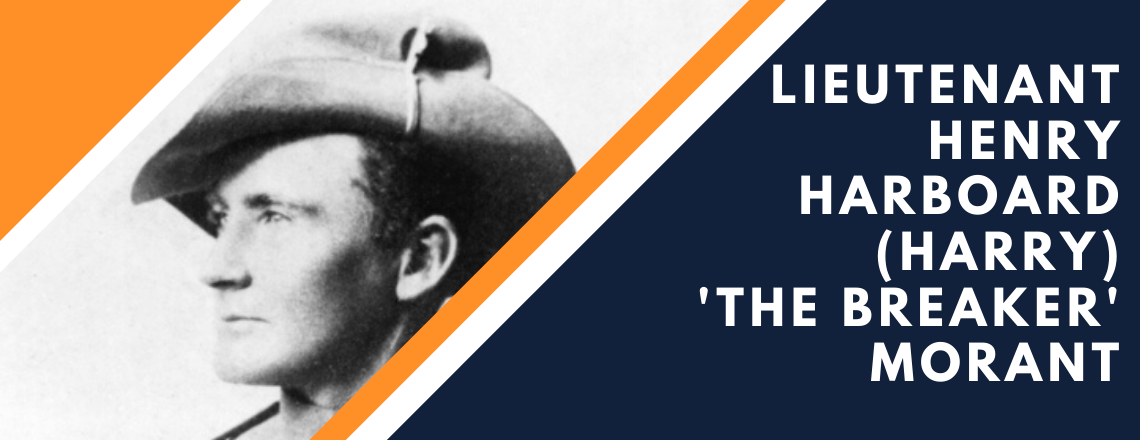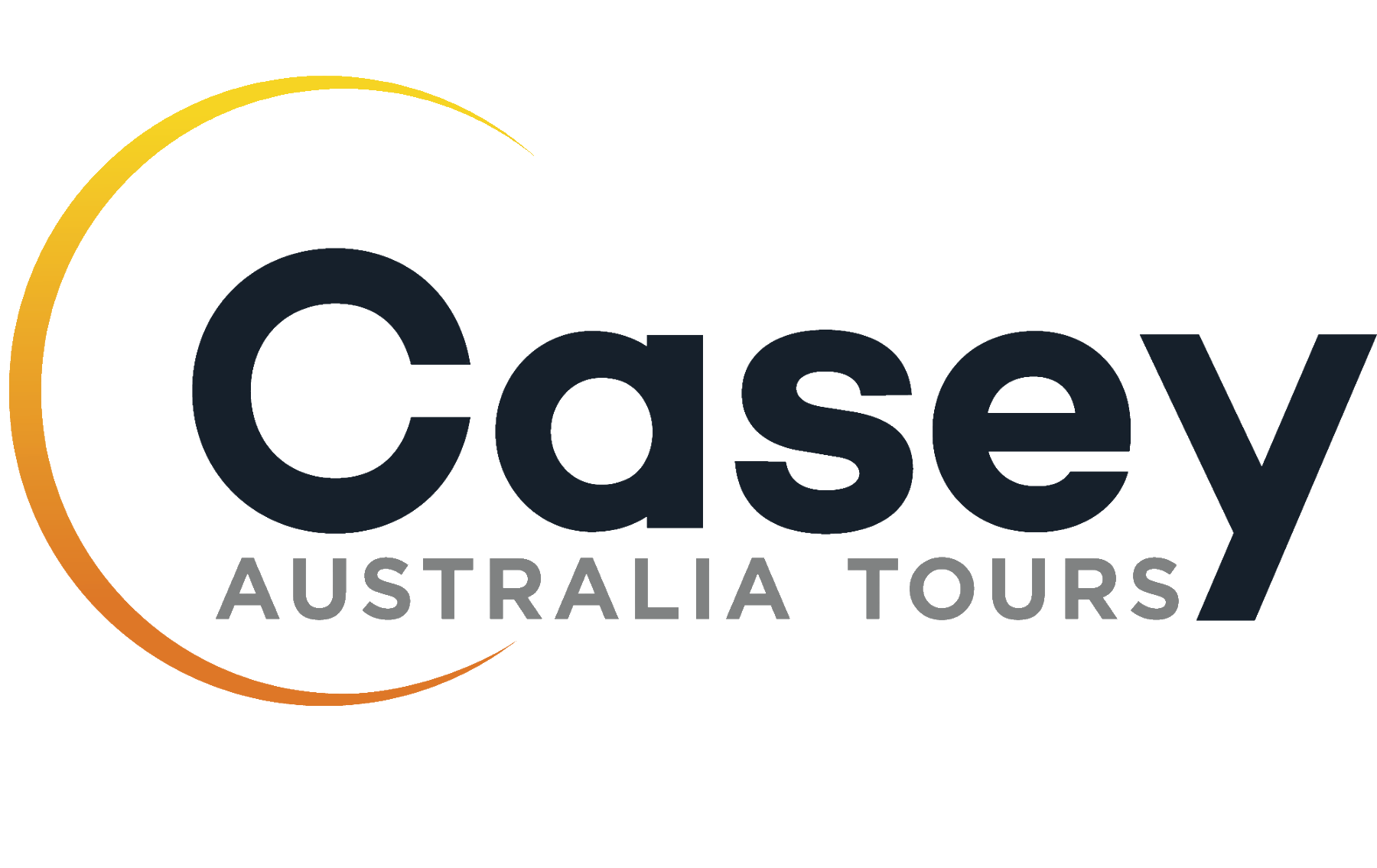
Breaker Morant – Hero, Scapegoat or Rogue?
Born at Bridgwater, England on 9 December 1864, Morant, also known as Harry Harbord Morant or Edwin Henry Murrant, left England on 1 April 1883 aboard the SS Waroonga from Plymouth and arrived in Townsville, Queensland on 5 June 1883.
His background is still somewhat of a mystery. He often said that he was the son of Admiral Sir George Digby Morant, or was he an illegitimate son who disgraced himself at the Royal Naval College and was sent to Australia to make a fresh start?
In fact, as far as is known today, he was the son of Edwin Murrant, master of the Union Workhouse and Catherine Riely, school mistress. Recent research though seems to indicate once again that he may have been the son of a well-connected father.
Morant was a polished, well-educated English migrant and soon made his mark as a horseman, fighter, thief, bush troubadour, poet, liar, loyal friend and courageous soldier. This rolling stone also was a flamboyant, hard-drinking male chauvinist and dare-devil.
If there was a crowd to watch he would attempt the most hair-raising stunts and his talent for breaking horses soon earned him the name The Breaker. He was able to hold his own in any society and at other times brawl with the roughest of the rough in the bush pubs where he often drank to excess.
Shortly after his arrival he gained a job with a travelling circus heading for Charters Towers, where within a few weeks he married Daisy May O’Dwyer, better known as Daisy Bates, governess at Fanning Downs.
The marriage took place on 13 March 1884 at the residence of James Hopgood Veal in Plant Street, Charters Towers. Both Harry and Daisy stated their usual place of residence as Fanning Downs. The marriage did not last very long though. After having failed to pay for his wedding and being charged for stealing a few pigs and a saddle his young wife kicked him out there and then.
During the next fifteen years he ‘worked’ in and around Queensland and New South Wales mainly living by his wits. Somehow, he did find enough time to write some good poetry and have verses and ballads published in the Sydney magazine The Bulletin, under the pen-name of The Breaker.
One popular poem was “Who’s riding old Harlequin now?”
A demon to handle! A devil to ride!
Small wonder the surcingle burst;
You’d have thought that he’d buck himself out of his hide
On the morning we saddled him first.
I can mind how he cow-kicked the spur of my boot,
And though that’s long ago, still I vow
If they’re wheeling a piker no new-chum galoot
Is a-riding old Harlequin now!
He was well known, and on friendly terms with, William Ogilvie, Henry Lawson and Banjo Paterson. He was popular among the bushmen who liked his poetry and his prowess as a reckless devil-may-care horseman.
After many years of hard riding, droving and drinking but little money and many unpaid bills, he became homesick and in 1897 tried unsuccessfully to get a job as a deckhand on the SS Oronsay, bound for England.
The outbreak of the Boer War in faraway South Africa provided some very good opportunities for Morant. It would provide lots of adventure and travel but at the same time also put a safe distance between him and some of the men and women he had cheated. It could also provide a chance to make it back to England.
Whether motivated by patriotism or not, he lost no time to head from Renmark, where he had been working, to Adelaide and enlist in the Second Contingent of the South Australian Mounted Rifles. After finishing his training in South Australia, he was promoted to Lance Corporal.
While in Adelaide, Morant was invited by the Governor of South Australia Lord Tennyson and Lady Audrey Tennyson to visit them at their summer residence at Marble Hill. Morant and his contingent sailed for South Africa on 26 January 1900. More than two thousand South Australians joined up for the Boer War among them six nurses.
Morant was certainly not one of the first to depart for South Africa. The 1st Contingent of the South Australian Mounted Rifles had already left on 1 November, 1899 and arrived at Cape Town on 25 November. The South Australian Bushmen’s left on 27 February, 1900. They were followed by the South Australian Imperial Bushmen on 1 May, 1900. Several other contingents left South Australia during 1901 and 1902.
Many South Australian country towns sent their volunteers. As many as thirty came from Jamestown. From Adelaide there were Willie Gosse, son of William Christie Gosse, Victor Way and Roland Cudmore. From Victor Harbor came Bill Halliday, Joe Croucher and Bowman Read.
Others came from Lyndoch, Macclesfield, Strathalbyn, Meadows, Crystal Brook, Clarendon, Mount Gambier and Port Pirie to name but a few. Among these South Australian volunteers were George Aiston and Lieutenant John W. Powell. Fifty-nine South Australians died from wounds or illness.
Among them were Charles Frederick Millman, aged 36 years from Echunga. He was killed in action on 31 October 1900 and buried at Jacobsdal, South Africa. Albert Arthur Vickery of Mintaro, Francis George Matthews of Wirrabara, William Reynolds Ewens of Port MacDonnell, John Edgar Gluyas of Quorn, Captain Samuel Grau Hubbe from Macclesfield, who was killed on 12 September 1900 at Ottoskoop and Lieutenants Leonard Gordon of Strathalbyn and John W. Powell of Mount Gambier.
Although several more contingents left South Australia for South Africa, not everyone was in favour of having young South Australians die for the gold wanted by England. Prominent Mary Lee wrote, ‘Another contingent! More human manure for those accursed fields! Mothers, wives, sisters, daughters of South Australia, Arise! I say and protest with one voice against our further soiling our souls and hands in this infamous jobbery.’
Morant had a great time in South Africa as chief horse and mule stealer. His outback experience with horses, his riding and knowledge about how to pack them, soon attracted the attention of his superiors. South Australian Colonel Jose Maria Rafael Ramon Francisco Gabriel del Corazon de Jesus Jacobo Gordon y Prendergast, better known as Joseph Gordon, recommended him as a despatch rider to the war correspondent for the London Daily Telegraph.
It gave him ample opportunity to visit the nearby hospital, not to see the injured but to make love to the nurses and break their hearts. After this first stint, he managed to return to England, leaving again a few unpaid bills, and become engaged to the sister of his friend Captain Frederick Percy Hunt.
On his return to Africa in April 1901, Lieutenant Morant enlisted with the newly formed Bushveldt Carbineers, a mainly Australian force raised in South Africa, to fight the Boers in Northern Transvaal on their own terms. No unit was more feared by the Boers than the Bushveldt Carbineers. On August 5, 1901, Capt. Hunt and 17 Carbineers rushed a Boer farmhouse and were surprised to find four times as many Boers as expected. During the attack both Capain Hunt and Sergeant Eland were killed.
According to a witness and corroborated by others, Hunt, who was only wounded, was killed and mutilated, his neck broken, his face stamped upon with hob-nailed boots and his legs slashed with a knife. His body had also been stripped completely of clothes. An enraged and grieving Morant exacted his revenge by executing Visser, a Boer found wearing Hunt’s clothes, and some other Boer prisoners. A German missionary named Hesse was also killed after Morant had suspicions about his motives in speaking with Boer prisoners.
Seven Carbineers, including Lieutenants Morant, thirty years old Peter Joseph Handcock and twenty-five years old George Ramsdale Witton, were charged with shooting Boer prisoners and the German missionary. Major Thomas, an inexperienced Australian lawyer from Tenterfield, New South Wales, was appointed to defend the Australians. The court-martial began in January 1902.
Morant showed nothing but contempt for his judges and accusers. He freely admitted shooting the Boers and justified his actions on the ground that Kitchener himself had given instructions that no prisoners were to be taken. During the court proceedings, the Boers attacked Pietersburg where the trial was being held. The accused men fought bravely and the Boer attack was defeated.
It made no difference to the outcome of the trial. The three Australians were found guilty of the murders of the Boers but were acquitted of the murder of the German missionary. Morant and Handcock’s death sentences were signed by Lord Kitchener on 4 February 1902. Witton’s death sentence was reduced to life in prison.
Game to the last, Morant and Hancock refused to be blindfolded and went before the firing squad at the old Pretoria gaol, Pietersburg in the early morning of 27 February 1902. Hancock’s wife, who lived in Bathurst with her three children, only found out from the newspapers that her husband had been shot.
Kitchener later admitted, in writing, that he had issued orders to kill Boers wearing English uniforms!! George Witton was put on board the Canada bound for the Naval detention quarters in Gosport, Hampshire, England where he was housed for only a day or so. From there he was escorted to LEWES prison in Sussex.
Sometime later he was transferred to the Convict prison at Portland, Dorset from where he was released after serving twenty-eight months. His life sentence was overturned by the British House of Commons on August 11, 1905. In 1907, Witton published his book, Scapegoats of the Empire.
Although two editions have been published, very few copies exist today. According to one story, the Australian Government considered that its contents could implicate Lord Kitchener and had all copies seized.
Boer War Memorial Adelaide
General Kitchener, during a visit to Australia in 1910 was asked to unveil a memorial to the Boar War Dead at Bathurst. He refused unless the name of Lieutenant Peter Handcock was removed from the roll. It was removed but replaced in 1964. The graves of Morant and Handcock later became very popular with Australian visitors, particularly after the 1980 release of Bruce Beresford’s movie Breaker Morant.
Although history suggests that the primary evidence against the officers came from their own men, disgusted at some of the actions they had been ordered to perform, the executions caused much disquiet in Australia.
The court martial was conducted hurriedly and in secret, contrary to regulations, and the transcripts conveniently went missing soon afterwards. A summary of the trial appeared in the London Times on 18 April 1902. Many Australians also wondered why the two British Officers, who were among the seven originally implicated, both escaped with mere dishonourable discharges, while the Australian Officers were gaoled or executed.
The Zimbabwe Archives in Harare holds letters, from Daisy Bates to Australian born Frederick Ramon de Bertodano Lopez, later 8th Marquis del Moral, written in 1945 on the subject of Aborigines.
The ironic part is that de Bertodano was the intelligence officer in Pretoria who played a major part in convicting Morant. Another interesting fact is that Daisy Bates mother’s maiden name was Hunt which of course was the name of Morant’s great friend.
